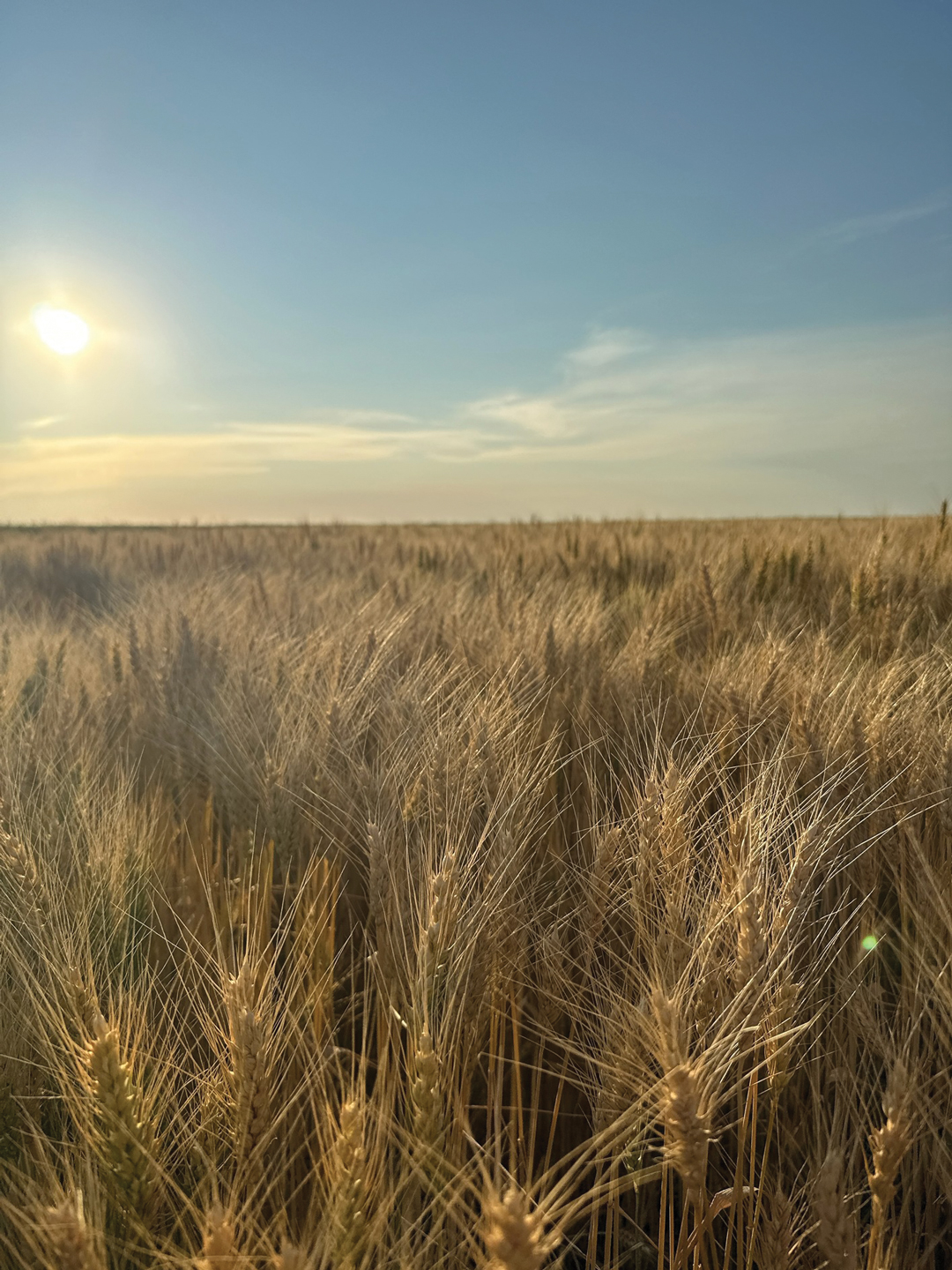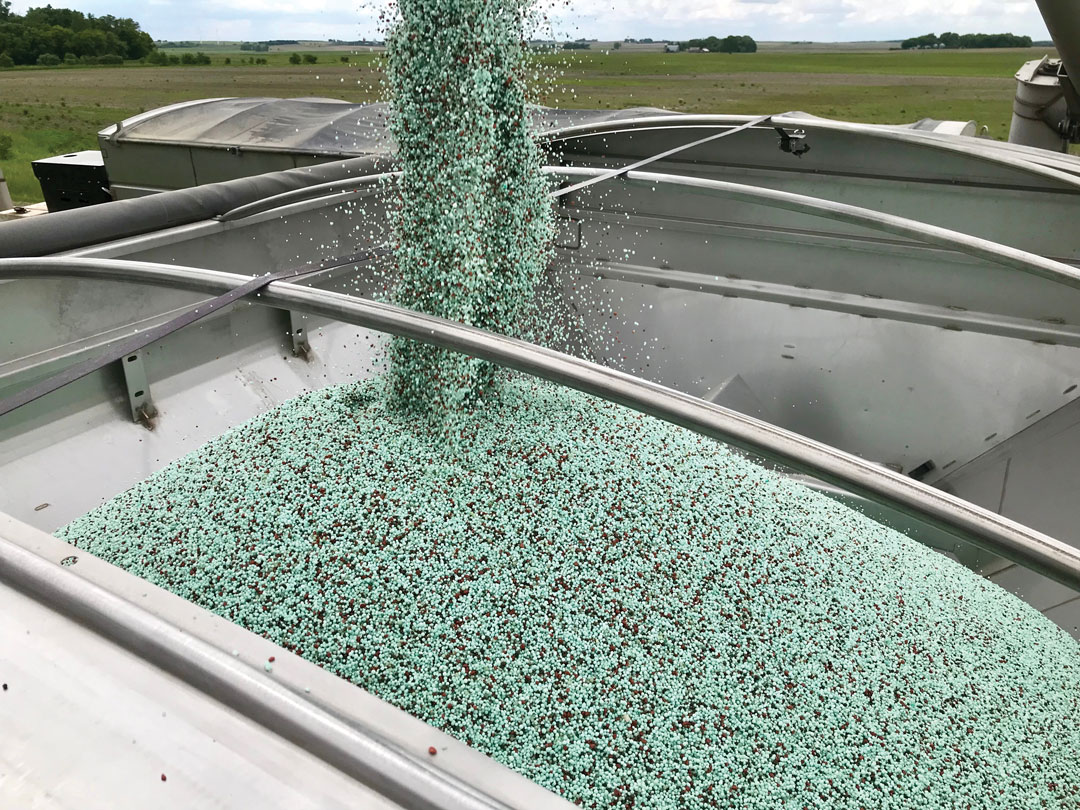DYNAMIC DUO
BY IAN DOIG • PHOTO COURTESY OF FP GENETICS
To protect the midge tolerance gene and ensure it continues to do its job, tolerant wheat must be sown as a varietal blend, 10 per cent of which is susceptible to midge. This limited sacrifice to the insect ensures it does not evolve countermeasures. Breeding these all-but-identical pairings is a tricky task, but they are needed now more than ever.
Though crop breeding timelines have shrunk, it has typically taken close to 10 years to produce a new wheat variety. This makes the production of each new cultivar an occasion for celebration. Developed in less than a decade and registered in spring 2022, midge tolerant AAC Darby VB and its refuge pairing AAC Hassler constitute a bona fide triumph. “We have exceeded the objectives we set out for ourselves,” said Santosh Kumar. The lead breeder of the CWRS breeding program at Agriculture and Agri-Food Canada (AAFC) Brandon Research and Development Centre, he has overseen the development of the two varieties.
The introduction of the Sm1 midge tolerance gene to CWRS wheat is not the hard part, said Kumar. The AAFC Winnipeg Research Station’s eastern Prairie breeding program first incorporated the gene in AC Unity in 2009. The creation of mirror varieties that exhibit a shopping list of improved agronomic, disease and quality traits, yet just one contains the Sm1 gene? Now, that’s a challenge.
When Kumar joined the AAFC breeding program in 2014, he and his colleagues identified early maturity as a central target of their CWRS work, and the necessity of developing midge tolerant varieties has since become more urgent. Their persistence paid off on both counts. Midge tolerant variety PT 495 was identified as a superb cultivar and was christened AAC Darby VB while its companion AAC Hassler emerged from development just a year later. The varieties were made available in 2022 by FP Genetics.
“We did put in the effort, but there was some divine intervention,” said Kumar. The four most critical traits for variety blending are almost identical in the two varieties. Darby matures up to five days earlier than Carberry, the CWRS check line, while Hassler matures four days earlier. They exhibit similar height and yield of up to six per cent greater than Carberry with similar test weight and Fusarium head blight resistance.
The only known midge tolerance gene, it is crucial Sm1 remains effective. This is doubly so given the phase out of chlorpyrifos, which can no longer be used as a control as of Dec. 10, 2023. “According to Bob Elliott’s work at the AAFC Saskatoon Research and Development Centre, chlorpyrifos has more effectiveness against midge eggs and larvae than dimethoate, the only chemical currently registered,” said Tyler Wist, research scientist of field crop entomology at the facility. “With the deregistration of chlorpyrifos, the use of midge-tolerant varieties is even more important.”
Also well timed, Darby’s early emergence may provide additional defence against midge, though more research is needed, said Wist. “Earlier heading, like in Kumar’s recent varieties, is also important. It can help the plant ‘escape’ the wheat midge females by getting through its most susceptible stages early. Those insects are usually well synchronized with spring wheat emergence.”
For information on the Midge Tolerant Wheat Stewardship Agreement and available varieties, visit midgetolerantwheat.ca.







Comments